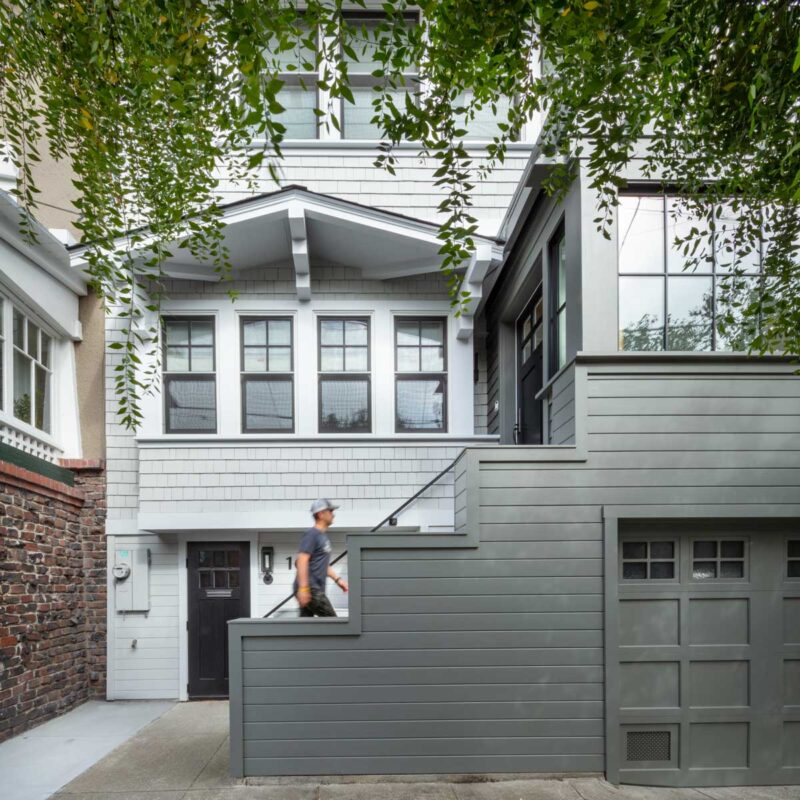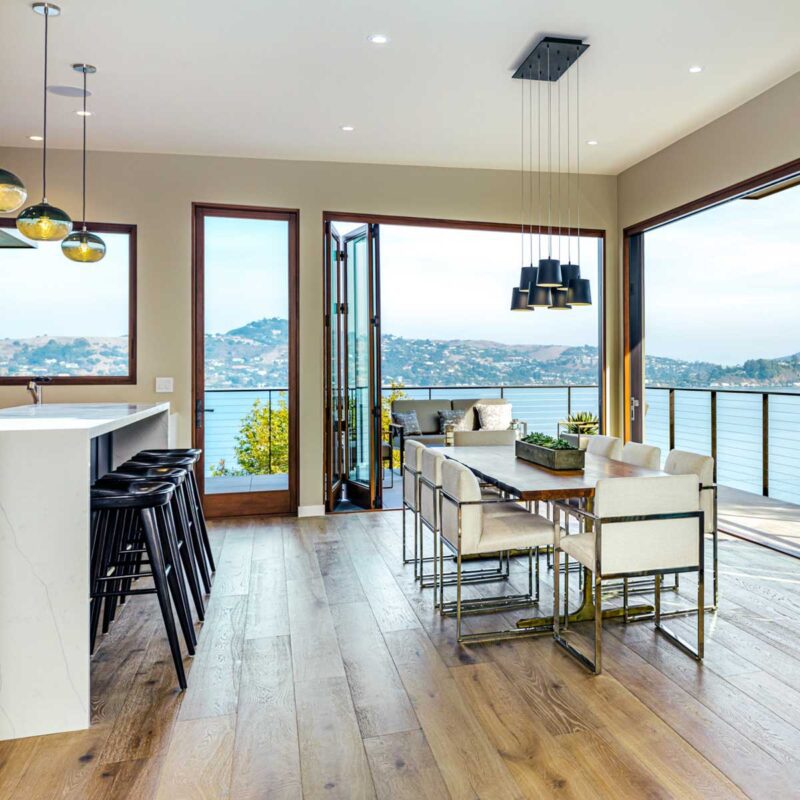An Elegant Disappearing Act
From a design standpoint, pocket doors are pretty compelling. The door operates by sliding into the wall, eliminating the space taken up by door swing and disappearing so you don’t have to think about it. You frame the wall in the place the door will slide, insert the pocket, hang the door, and voilà.
Except, of course, it’s never that clean and easy. More on that in a minute.
Pocket doors can be great for a primary bedroom closet, where you might not close the door every day; they also work well for kitchen pantries you will be walking in and out of and don’t need to hide unless guests are over. The theme here is that they are best in places where you won’t be opening and closing the door all day long, because despite the space-saving convenience, there are issues.
they are best in places where you won’t be opening and closing the door all day long.

The Downside of Pocket Doors: Things to Consider
As with everything, you can find a pocket door kit in almost any price range, from $200 to $2000, not including the door. But buyer beware, the cheaper ones are likely going to be much poorer quality, work less well, and require more maintenance. On average, a well-built pocket door kit and door will set you back significantly more than a good swing door.
Installation of a pocket door needs to happen before sheetrock or trim are installed, as the wall framing has to be adjusted to accommodate the pocket. This makes retrofitting a swing door to a pocket door impossible unless you’re willing to open up and reframe the wall. You also cannot have electrical outlets or lighting in the area where the door rests inside the wall, as anything that goes deeper than about an inch in that area will hit the tucked-away door. Pocket doors are not as durable as a swing door, and the tracks often need to be re-adjusted or repaired—doing so is tricky and sometimes involves removing trim to access the hardware.
From a use standpoint, there are not great locking options for pocket doors, so they need to be used where privacy is not a concern. They also do not close as snugly as a swing door, which can increase sound transmission and cause rattling.
Pocket doors are not as durable as a swing door, and the tracks often need to be re-adjusted or repaired.
A Flexible Alternative to Pocket Doors
If a sliding door really appeals to you, you might consider a barn door. It has the same sliding action as a pocket door, but sits on the face of the wall rather than inside it, making everything from installation to maintenance much simpler.

An added bonus is that there are plenty of ways you can make a barn door a design statement as well, like painting it with chalkboard paint or as a wood accent.


Final Thoughts
The bottom line with pocket doors is that they have design pros and construction/maintenance cons. We navigate this issue often with clients, and in the end, our advice is to use them sparingly, if at all. They have real benefits, but they won’t be care-free.
































